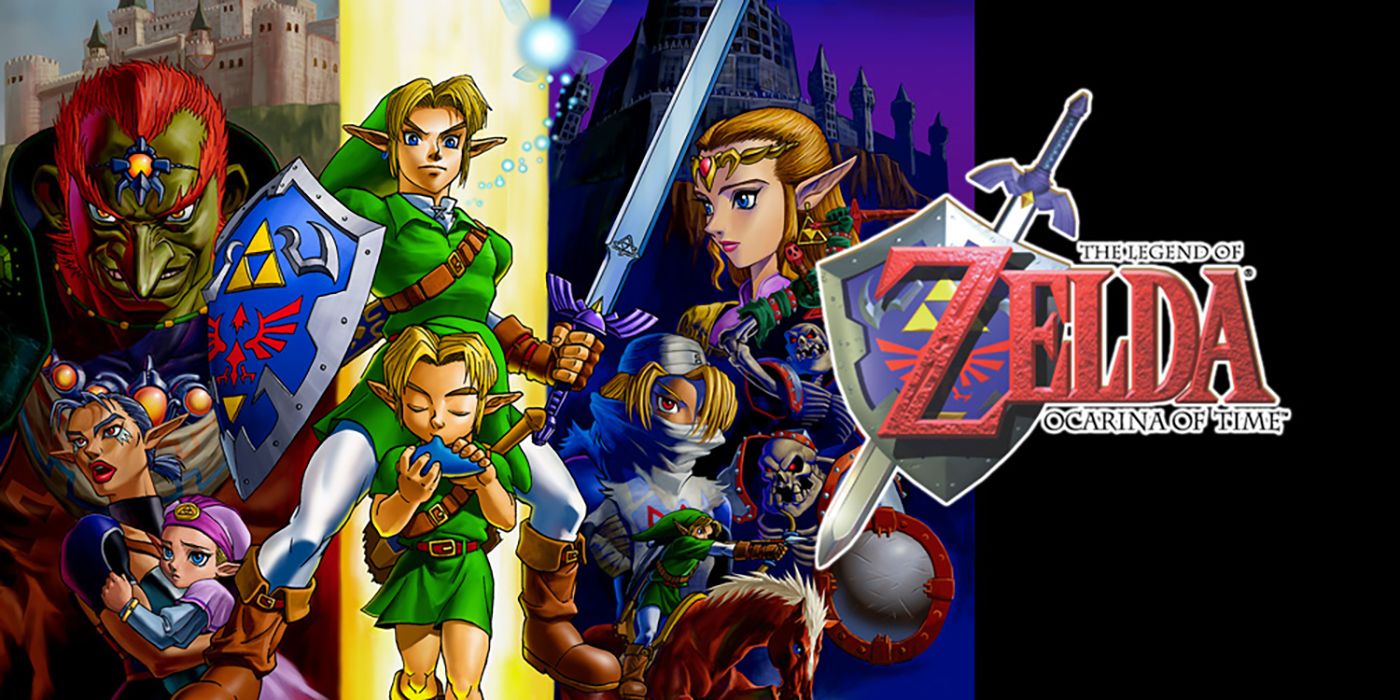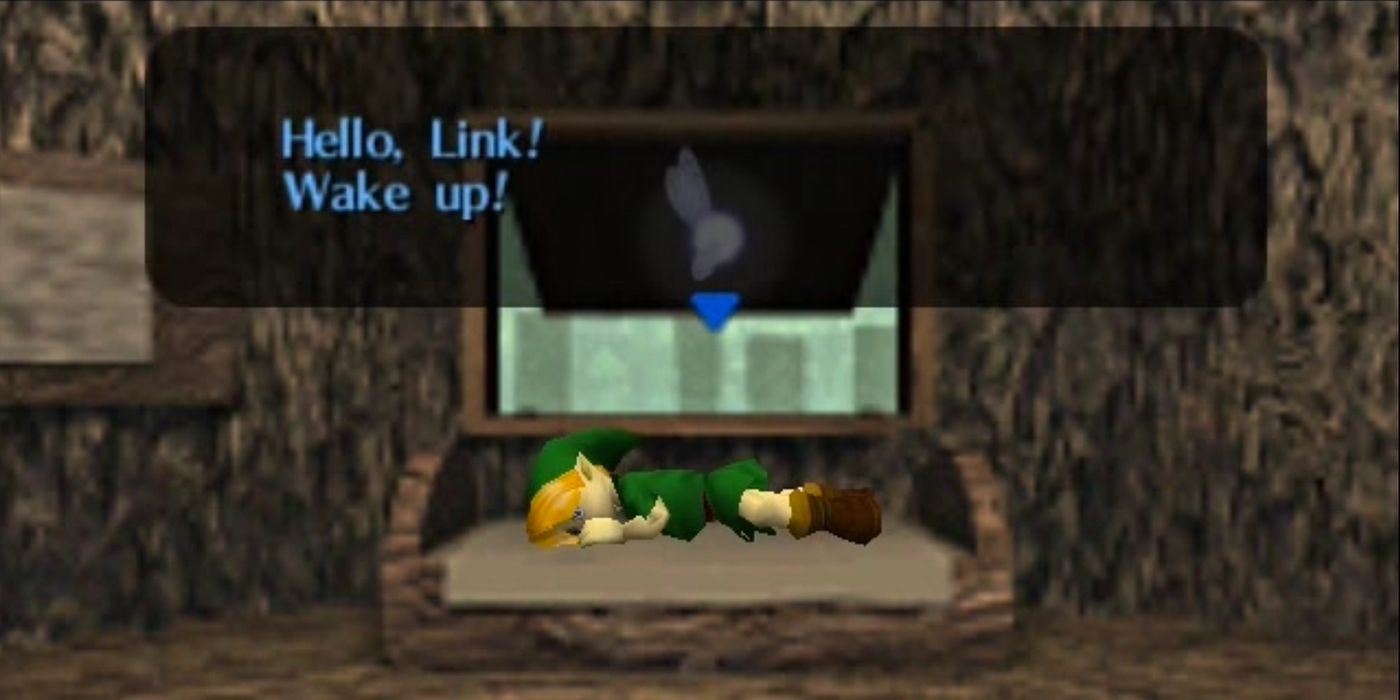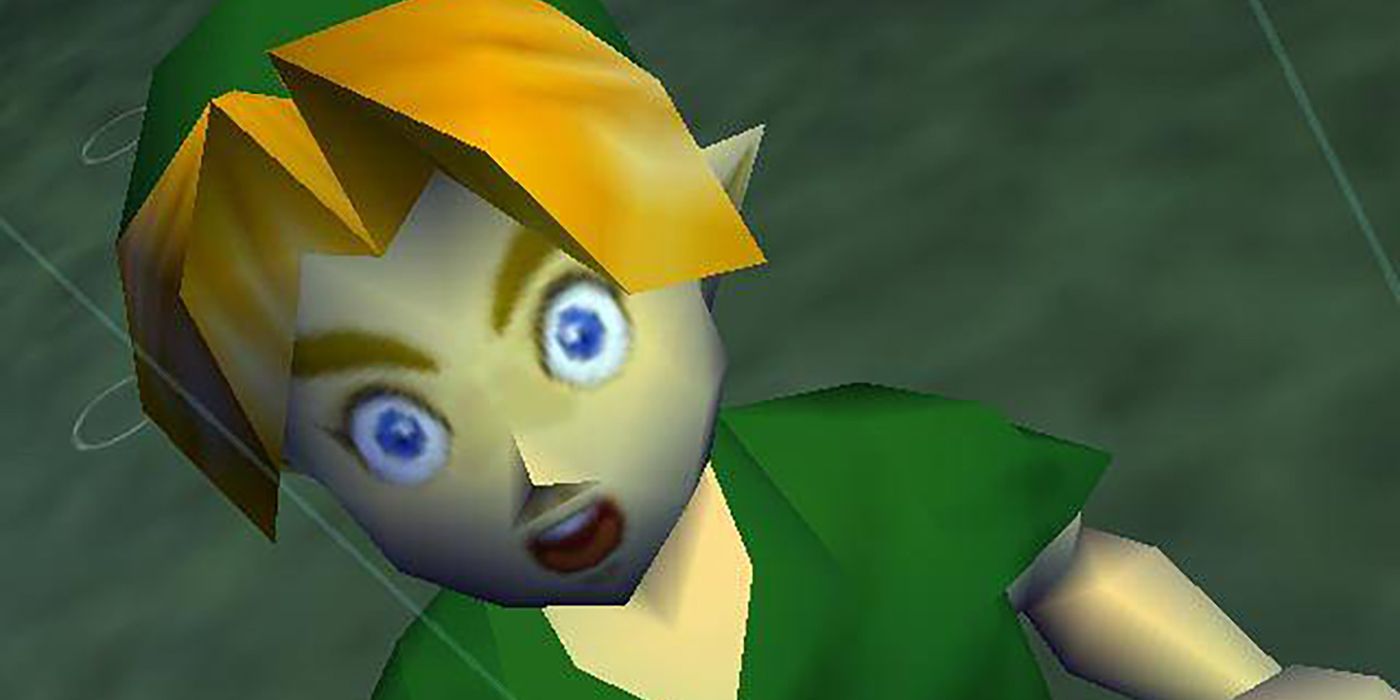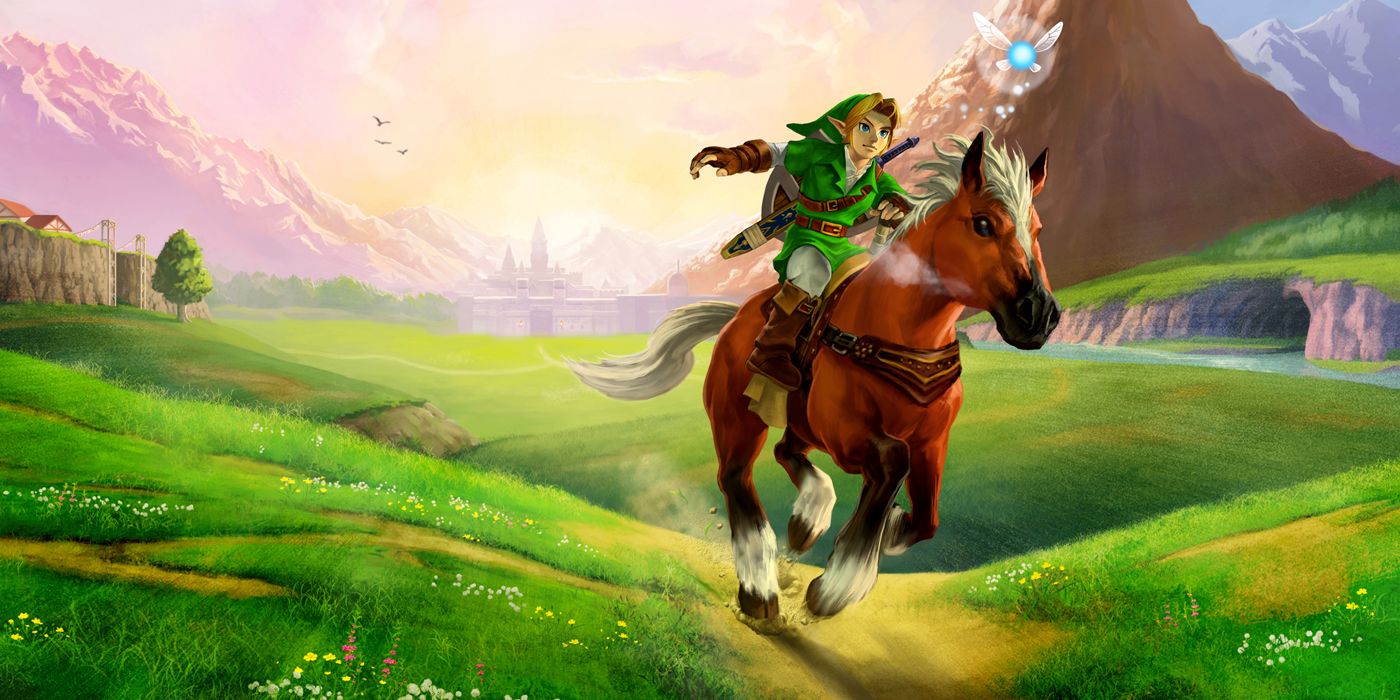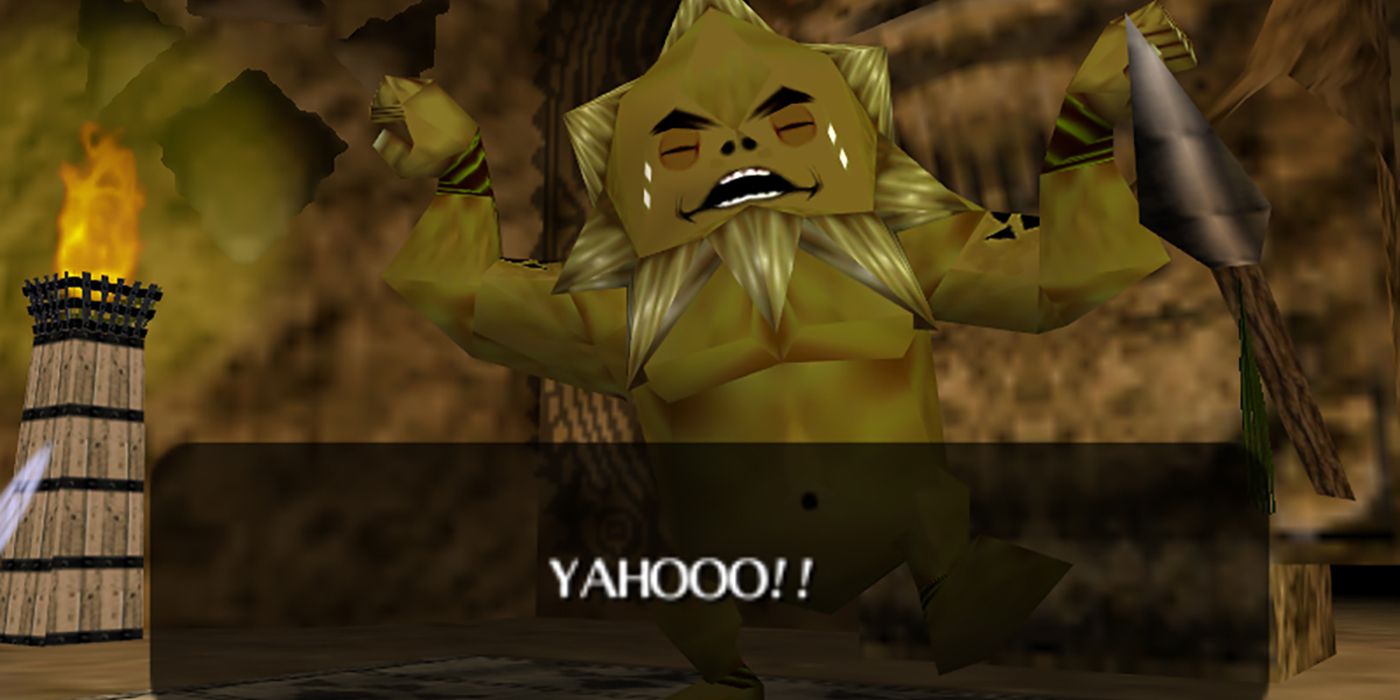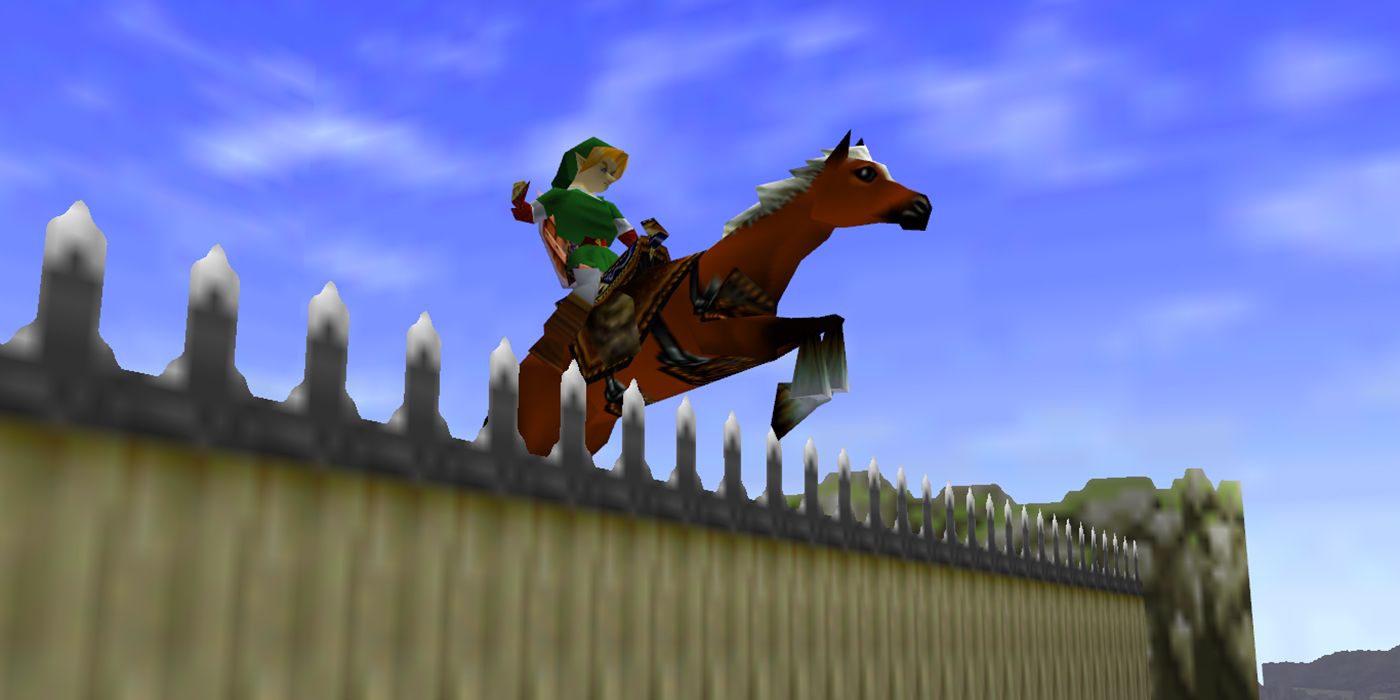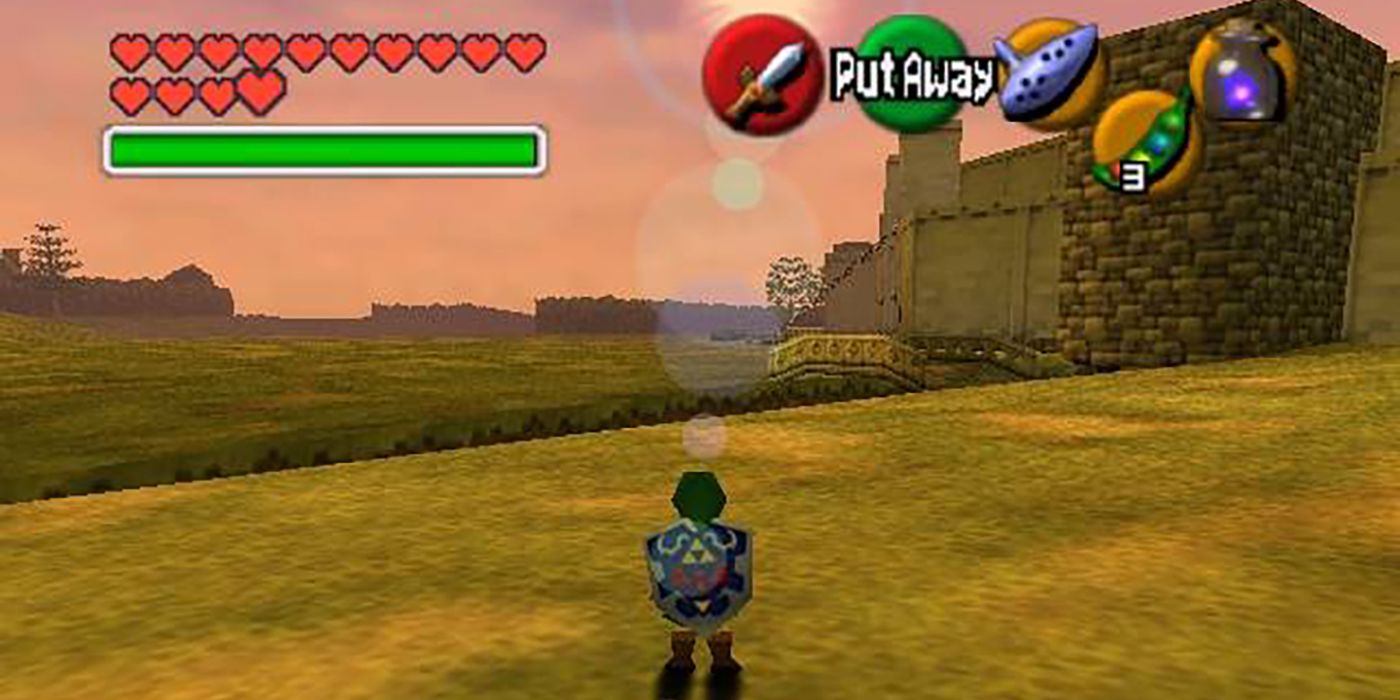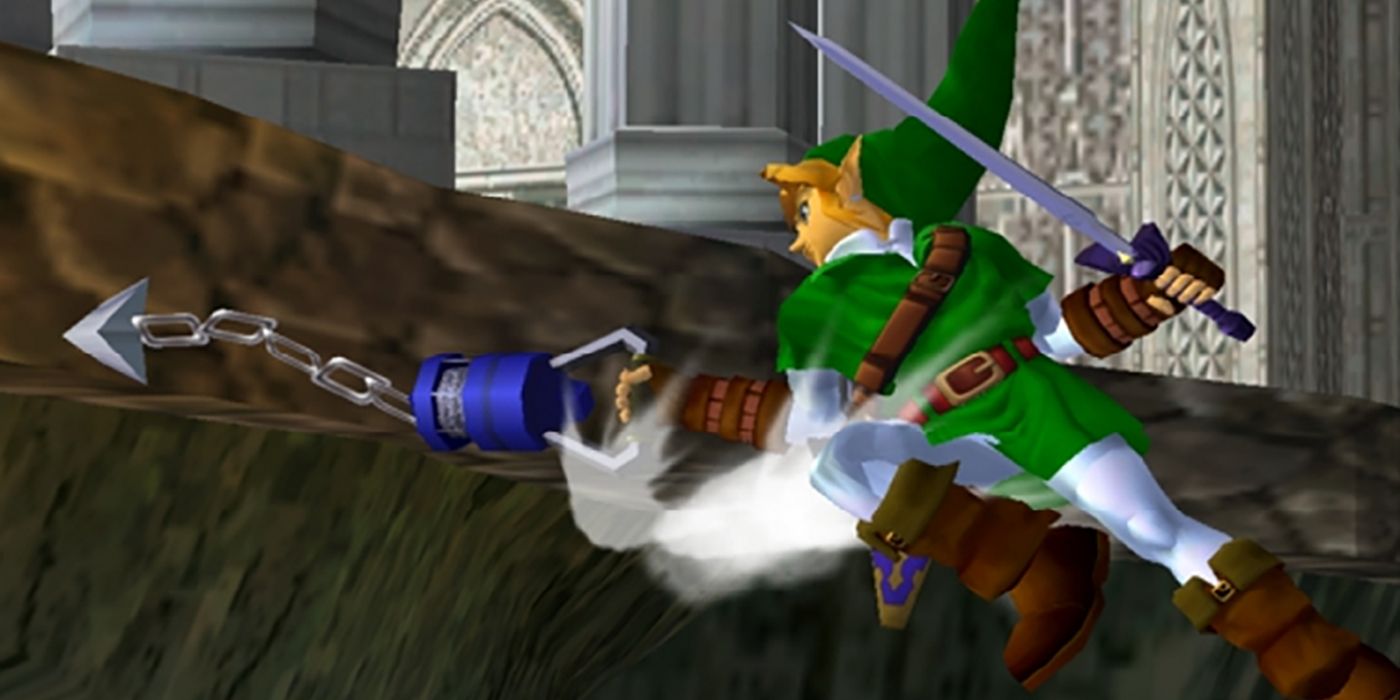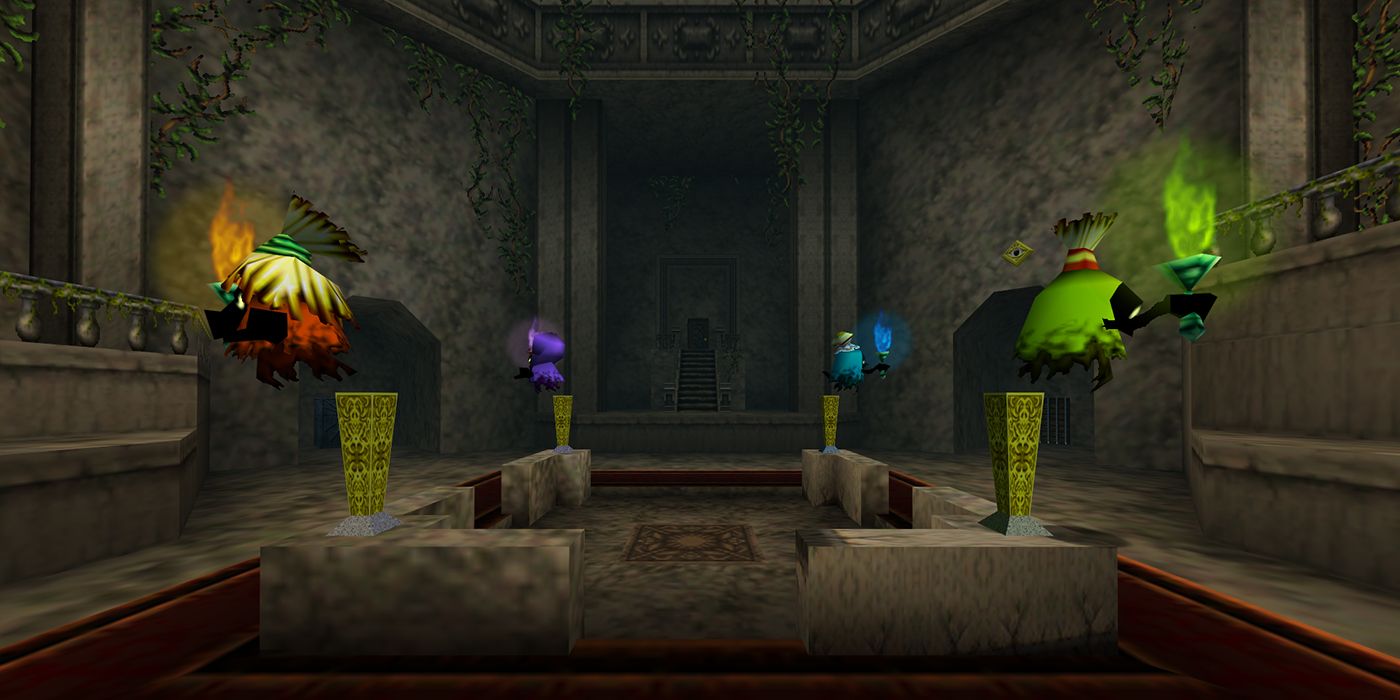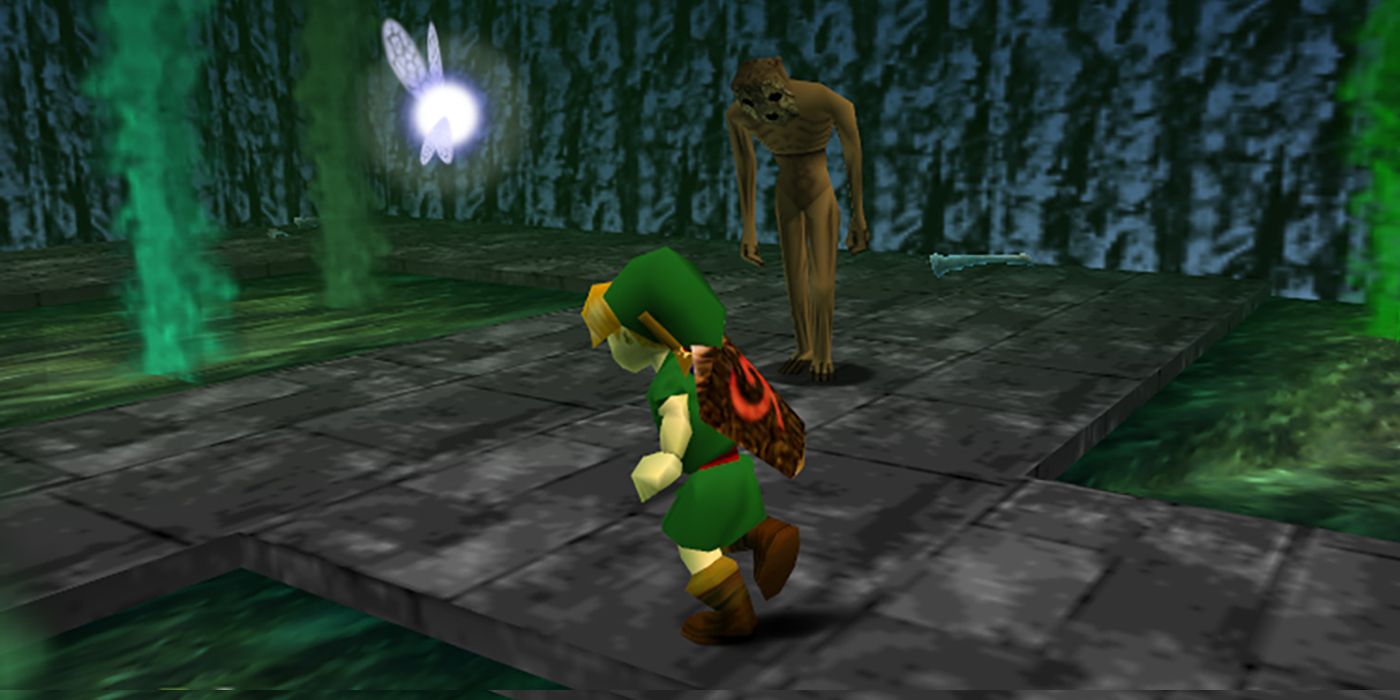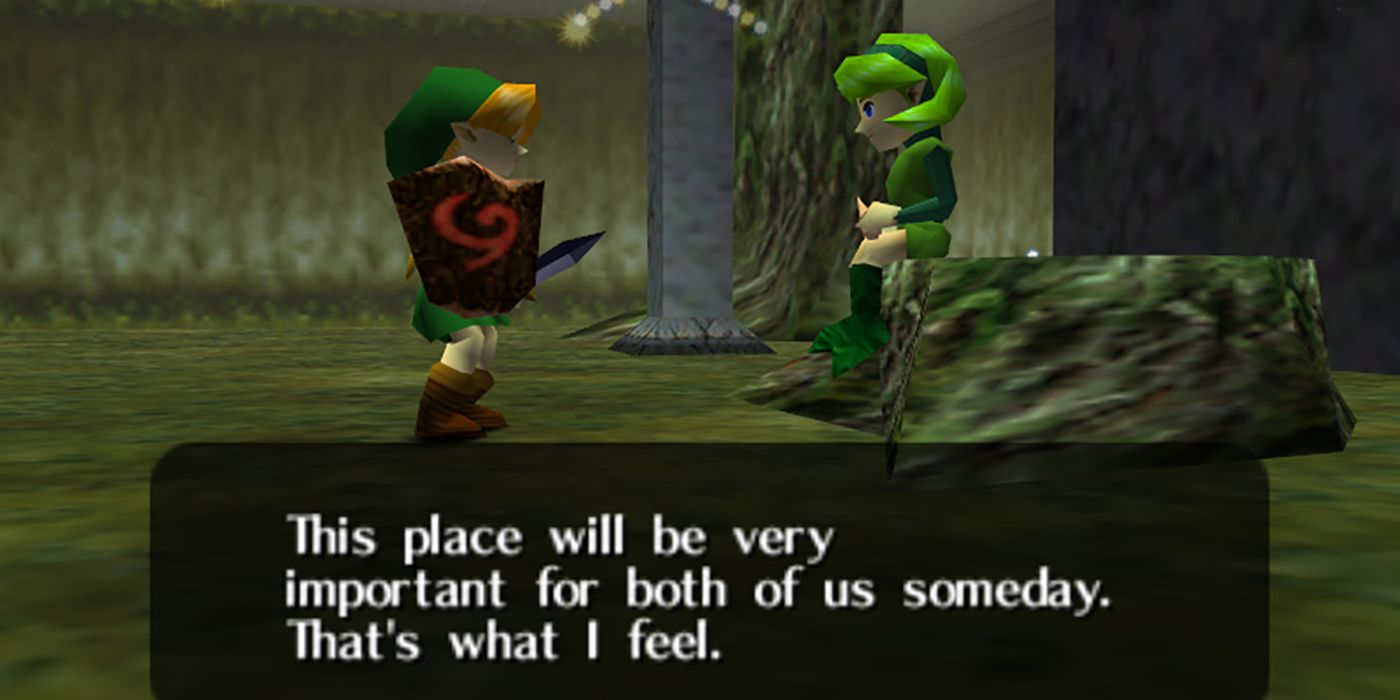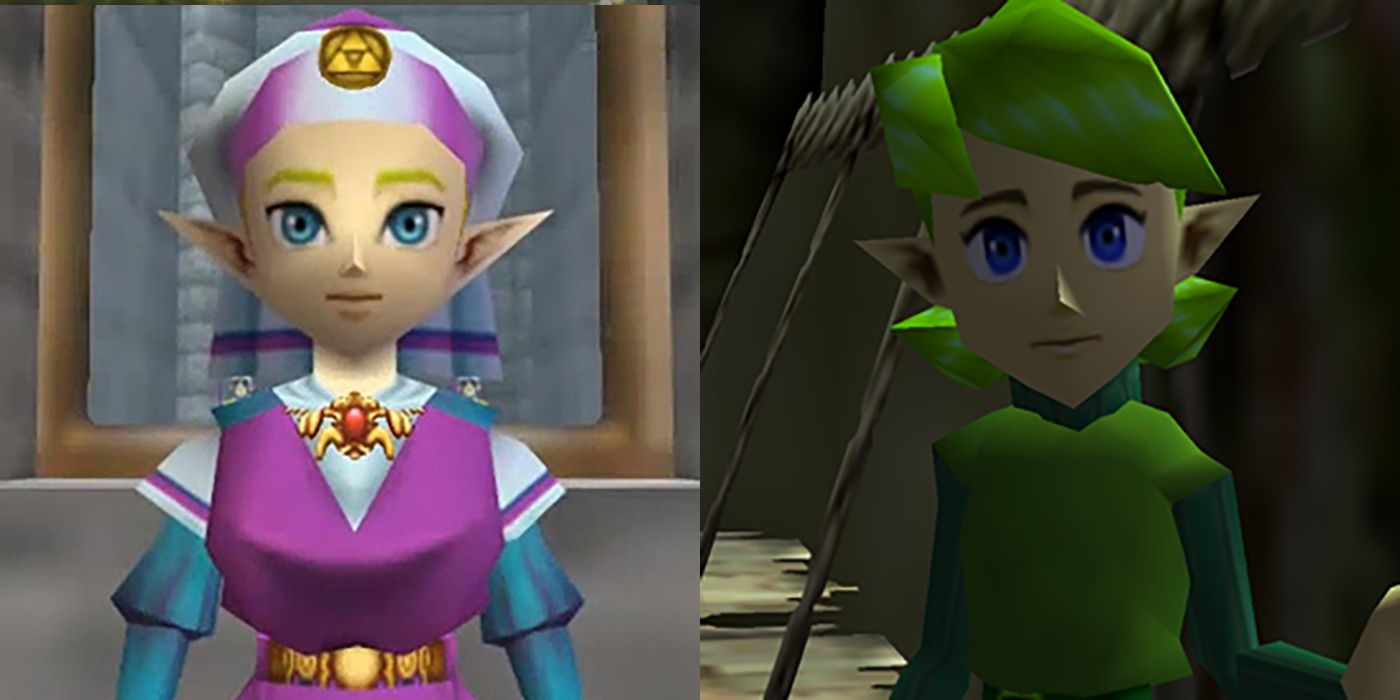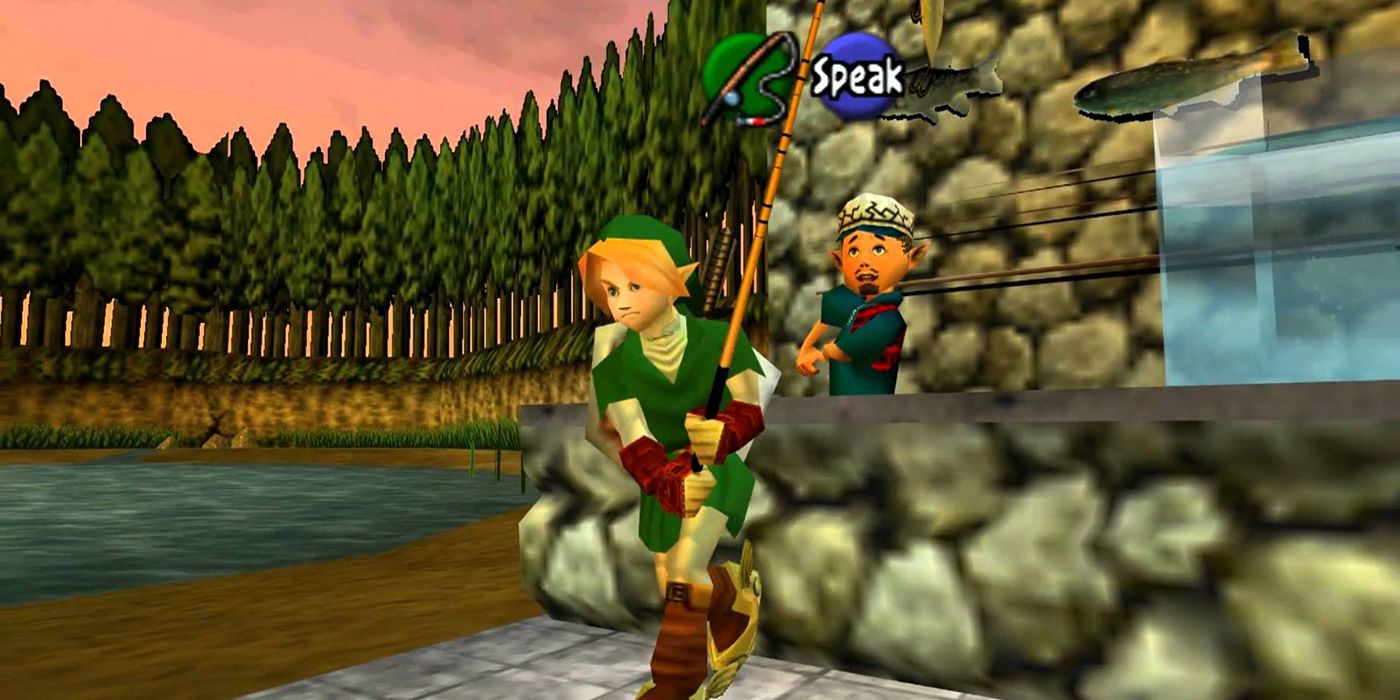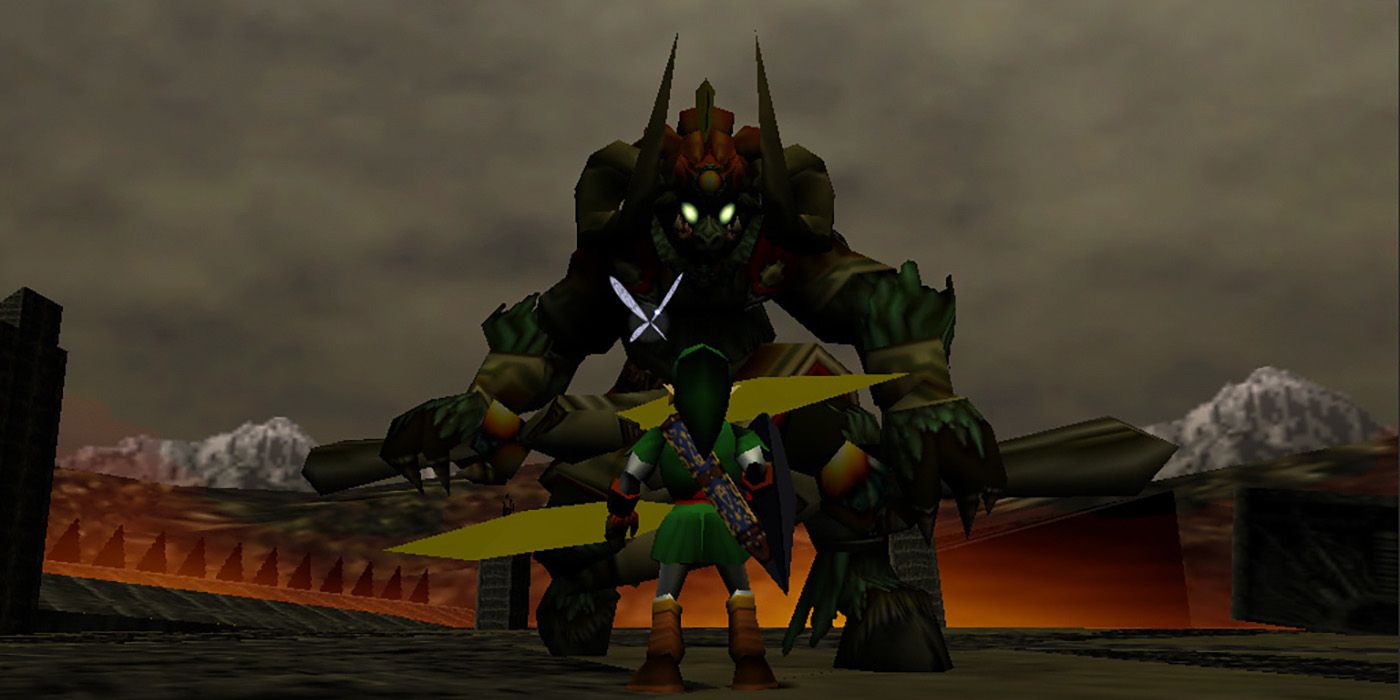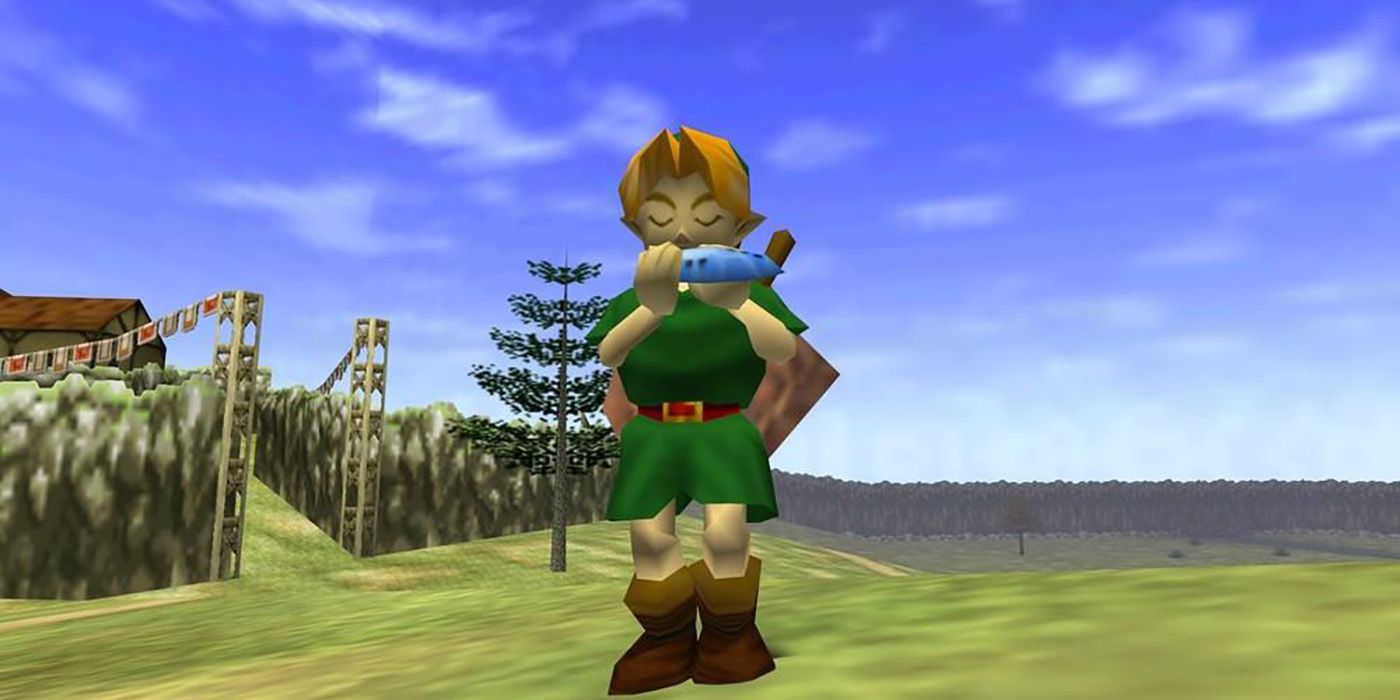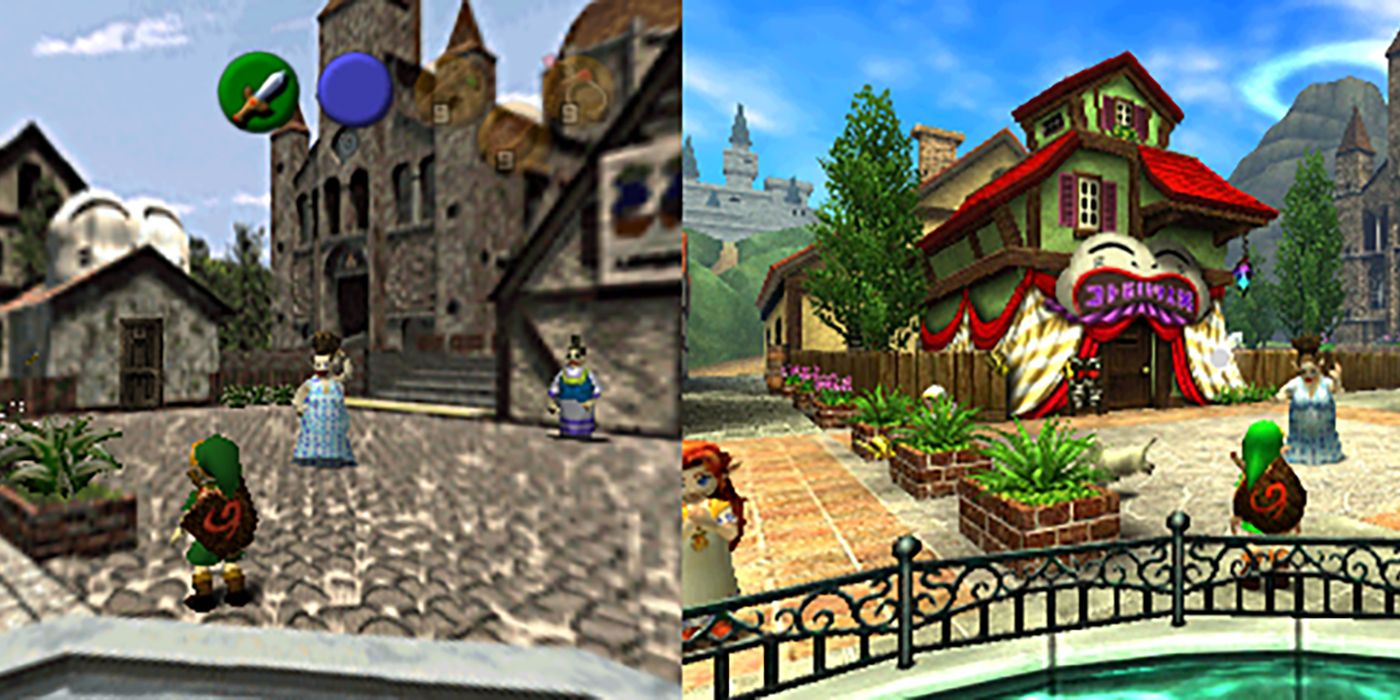With the release of the Nintendo Switch, critics and players are rightly raving about Breath of the Wild. However, before you go throwing around the “best game ever” claim, let’s not forget that Breath of the Wild probably isn’t the best game ever, or even within its own franchise.
In November 1998, the landscape of not just Zelda, but gaming itself changed forever, as The Legend of Zelda: Ocarina of Time plonked a cartridge in the N64. Dragging Zelda from its formative 2D days, Ocarina took a Master Sword to the competition and sliced itself a huge piece of gaming pie.
As we settled in for the winter months, players were taken away to the heated lands Hyrule - scorched by active volcanos, fire demons, and the evil of Ganondorf. Heralded as a masterpiece of gaming and lightyears ahead of its time, Ocarina has undergone various ports and remakes, while living on as a legacy through the games that followed. Many still have a special place for Ocarina of Time in their gaming collection, and rightly so!
For those who have forgotten just what made it so spectacular, here are 15 Reasons Why Ocarina Of Time Is Still The Greatest Zelda Game!
15. It Was A Coming Of Age Story
We have all seen your stereotypical coming of age story, while the likes of Batman, Boyhood, and The Breakfast Club have plodded along with generic plotting of downtrodden kids having to grow up fast. Even games can be accused of the same cliches. Ocarina, though, offered a wholly new coming of age story for little Link of the Kokiri village.
The whole game opened with a stunning, if a somewhat graphic, nightmare and we soon realized that our main character really was just a kid. Before we even set off into the unknown, we had to battle the various creepy crawlies that lived inside the wise Deku tree and also found out that Link is an orphan to boot - sorry Oliver and Annie, move on over!
However, it wasn't until Saria waved us off on the outskirts of the village that the player felt it as much as the little tunic-wearing hero did. Big gulp - armed basically with kid's toys to fight the darkest of all evils, it was time to set out on one hell of a journey and grow some serious cojones.
14. It Was The First 3D Zelda Game
Even by today’s standards of 3D games, Zelda’s 1998 classic is way up there. Sure, it is a little blocky and the mouth work is slightly off, but wasn’t everything in the ‘90s? The N64 did wonders for the gaming universe, so it is no wonder that the likes of Ocarina and Mario 64 are still lauded as stellar games. Moving Zelda from 2D into 3D was a brave move that could have alienated fans of the franchise, but it is impossible now to imagine a game where we braved the Forest Temple from a look-down perspective.
For the first time in 12 years and five games, we could actually see characters' faces as more than pixelated blocks of beige and green. Gamers quickly learned that Nintendo may have used this slightly to overkill, watching as Link gasped and gobsmacked his way with OTT mouth-drops throughout the runtime.
Secondly, the use of 3D literally reinvented gaming, thanks to Ocarina’s lock-on targeting system. There were worries about how you could kill an enemy moving from a flat surface to a 3D world, but Ocarina nailed it. Everyone remembers locking onto those pesky Skulltulas, to strike and then get knocked back. Where would modern games be without Ocarina’s targeting?
13. It Was A Huge World
Zelda games have always excelled at creating an immersive world, and Ocarina set a precedent by going from world to universe. The actual size of Hyrule is still a little incomprehensible. As Breath of the Wild has shown us, it is a pretty damn big world. To tackle such a map in the late ‘90s, and do it so well, is no small feat.
There were endless hours of running across Hyrule Field, cursing your stubby child legs, before you even got to the Temple of Time itself; with its cavernous ceilings and monkish chanting, it wouldn’t look out of place on an episode of Game of Thrones. All this in only the first chapter of the game. Progressing from Bellies and Caverns, we attacked temples and more: Dampe’s Graveyard, the Lon Lon ranch, and Gerudo’s Fortress. Each location was well thought out, serving as not only their own individual level but their own little world.
However, it all came back to the lush greens of Hyrule Field. You never felt particularly safe there, but glimpsing the far off clouds swirling Death Mountain made you feel slightly better that you weren’t quite there yet.
12. The Supporting Cast
As lonely as your trip across Hyrule could be, it was also studded with some colorful characters to make your day better/worse. That know-it-all owl was damn annoying, but for every owl, there were 100 Zoras, Happy Mask salesmen, or other random shop owners. Really though, who wants to go bowling at midnight?
Also, there was no whitewashing controversy here. If you were a blue fish thing, a caucasian forest elf, or even a grumbly rock monster, Ocarina didn’t discriminate. Everyone in the game - including Princess Ruto, Maron, and Princess Zelda - had a story to tell and their quests were a welcome tangent from trawling the glum depths of some dripping dungeon, as well as rewarding storytelling
Highlights include the dancing Goron King Darunia, the nefarious rancher Ingo, and the mysterious Sheik. While nowadays you could spot the big twist that the boyish Sheik is in fact Zelda doing her best boy-drag, back then it was a big shock. The characterization throughout Ocarina of time and the cleverly woven relationships is just another tick on what made it great.
11. Epona
While you can lump most of the supporting cast into a singular list, there is one character that needs an entry all of her own. Forget Saria or Zelda, the real love of Link’s life is Epona. Director Yoshiaki Koizumi apparently named her after the Celtic god of fertility and horses, citing that if you name something after someone important, you gain more of an affinity with it. The whimsy of visiting a ranch and hearing the story of the nut-colored pony forged the bond between Epona and Link early on.
All Navi did was annoyingly shout “Hey” at Link, while Epona’s role as silent steed was the perfect addition to the game. She was actually birthed from an idea for Mario 64 and later scrapped until Zelda, but it is hard now to imagine Ocarina without her.
More to the point, it was hard to win Epona over. Kicking Ingo’s backside and taming your horse is easily the most rewarding part of the game - mainly she gets you across the field a lot quicker. However, as the story goes on, you start to feel a bond with this pile of pixels and pastels, making Epona one of the best gaming sidekicks in the history of consoles.
If anyone disagrees, just check her out in Breath of the Wild, given a fresh lick of paint and brought galloping into 2017.
10. Day and Night Mode
Rarely in games do you find yourself worrying that you had to be home for dinner time, but Ocarina changed that with its day and night cycle. You would find yourself praying that you could make it out of the wilderness before nighttime fell, and there are no words to describe the sense of fear as you reach the Hyrule gates just as the drawbridge goes up.
You were at the mercy of the clock up until learning the Sun Song from the Royal Tomb, which does help somewhat but isn't necessary to complete the game. Majora’s Mask took timing to an insane new level, while Ocarina had just the right idea.
It was satisfying watching the sun or moon cross the sky with the beautiful colors of a sunrise and sunset. Waiting three or four days for Biggoron’s sword could either be a breeze or a frustratingly long wait. Day and night seemed a little inconsistent at times, and the likes of Hyrule market were stuck in day or night until you left the area - which led to many people blankly standing in one place while scouring for a strategy guide. However, in 1998, a day/night cycle was a brilliant innovation for a 3D game.
9. The Items
While Hookshot, Iron Boots, and Megaton Hammer may sound like wrestling moves, all proved to be instrumental items in getting Link to that big boss battle. Taking Link from the flat and into 3D could’ve posed a problem of how to tackle different enemies and get around, but luckily the developers had a solution. Whether it be flying across a dungeon with Hookshot, or a well-timed fire arrow, Ocarina had a solution for every occasion. Much than ever before, certain items became key to accessing other areas - as anyone who tried to access the Water Temple without Iron Boots will know.
Few games have a catalog of weaponry as imaginative or as large as Zelda, and anyone who didn’t shed a little tear when you grew into puberty and could no longer use your Deku Shield is a monster. However, what came next was even better. Even the items you didn’t carry added more to the game; it was thrilling to light a row of bomb flowers and hear the accomplished chime, knowing you had done the right thing and not killed a family of innocent Gorons.
While wielding the Master Sword made you feel like you were there slicing up Ganondorf yourself, all of this was topped off by the titular Ocarina. What seemed like a gimmick for a title actually turned out to be the best part of the game (apart from Epona).
8. The Dungeons And Temples
Once you thought you were all tooled up for the impending apocalypse, it was time to put those skills to the test. Swapping your shoes more times that a catwalk model for the Water Temple was only one of the myriad of difficulties you would face in the dungeons and temples the game threw at you.
Even the Deku Tree’s tutorial in itself formed a dungeon of sorts. Sure, other Nintendo properties like Mario and Banjo-Kazooie have sprawling levels, but Ocarina took you inside giant fish, active volcanos, and haunted houses while still making a realistic game.
As Link grew up, the game grew up with him. Even the most accomplished gamers would find themselves caught out in the labyrinth of corridors and have to go back for that annoyingly elusive key they missed somewhere. Increasingly difficult and adult in level design, who didn’t get lost in the twisted corridors of the Forest Temple and its shifting walls? Meanwhile, the map and the compass were about as useful as a chocolate fire-arrow.
After all the puzzle solving, every level had a great payoff with a big boss battle too - Phantom Ganon is just as haunting 19 years later. The game culminated in the Spirit Temple, a masterfully designed piece of art where you were forced to swap between old and young Link to reach your end.
Zelda has seemed to scale back its dungeons since, which is no surprise given the scale of Ocarina.
7. It Was Scary
The aforementioned fight with Phantom Ganon on his undead horse was just the start of the horror that Ocarina would throw at you. We had already battled with the ferocious Dodongo and met the snivellingly sinister Happy Mask Man, but from the moment adult Link stepped out of the Temple of Time, Nintendo had dialed the horror switch up to 10.
The colorful dancing from the start of the game was gone, replaced with Viking-esque Stalfos skeletons and rides on haunting ghost ships. The Shadow Temple, in particular, was bursting with jump-scares and unexpected ReDeads. After alll these years, hearing a ReDead scream from Zelda can still turn our blood to ice. However, the ultimate scare of Ocarina lurked above us - the severed Wallmaster hands. Seeing the shadow above you grow larger and larger surely signaled "Game Over" - and that choking Link dropping against a black screen.
While Majora’s Mask got darker, and Twilight Princess went off the scale with darkness, Ocarina was a terrifying start to Zelda’s 3D days. Who can forget that moment when Ganon is in Hyrule Castle and looks out the window, right us. Brrrrr, just plain creepy!
6. It Was Full Of Emotion
With a game so dark, there was the inevitable specter of the Grim Reaper. No, not just the numerous "Game Over" screens, but actually loss of life during the game's runtime. There were several sacrifices along your journey, starting off the Deku Tree and his short-lived companionship with you in the Kokiri Village. Also, remember Deku’s stoic words on the fate of Link’s parents: "I'll now tell you your origins!! You're really of another race entirely, your parents are dead, and you have to go save the world from a great evil!"
However, Ocarina is remembered in particular for the passing of Saria. Okay, she didn’t technically die, but her moving over to another realm and leaving behind her family, friends, and Link still chokes us up all these years later. Saria’s parting words that she would always be our friend still ring true as she disintegrates into the sky in a puff of green light. Luckily Saria’s legacy carried over, and you may be able to spot a Saria stained glass window in Wind Waker if you looked hard enough.
If you ever wondered why Mido and King Zora look so forlorn during the end credits at Lon Lon Ranch, remember that they both lost someone close to them - Sara and Ruto both became Sages to save Hyrule. While most of Hyrule returned to some form of normality, Zora’s Domain remained a frozen wasteland even after Link's departure. What a bummer!
5. It Was A Love Triangle
Speaking of the ladies in Link’s life, while it seemed that every creature of the realm wanted a piece of the Hero of Time, Ocarina turned itself into a soap opera love triangle. There will be many debates on who is the real love of Link’s life, with avid fighters for both the Zelda and Saria corner.
The titular princess is obviously the go-to choice. Just like Mario saving Peach, the Zelda games usually follow Link’s quest to rescue the Zelda. However, Ocarina threw Saria in the mix. As the girl who gave him his ocarina on the bridge out of the village, there was always a sentiment that the two would be more than just friends, while even the bullying Mido implied that they were made for each other.
Then there is Zelda, first appearing literally as the girl from his dreams, from the moment Link clocked her in the castle gardens, our hero was immediately drawn to her. Link is also drawn towards Sheik, only to find out that he is, in fact, the princess in disguise.
The fate of Zelda and Link seems written, but whether that is really what the young lad wanted remains a mystery. Saria’s transcendence into Sage life effectively ended the love triangle, but was that really Link's choice, after all?
4. It Made Fishing Fun(ish)
Ocarina had some very odd mini-quests and side missions that didn’t really make sense. If collecting bunny masks wasn’t your bag, then how about a spot of relaxing fishing by the lakeside? Sometimes saving the world can get a little much, so casting your line out into the clear waters could be a great pastime to blow off steam.
It was a mundane enough task, but if you were one of the lucky ones to have a rumble pack installed on your controller, get ready to literally feel the excitement. It became a game with yourself to see whether you could land a record-breaking catch from Lake Hylia, just to impress some creepy old hunchback and nab his approval. Renting a rod for just 20 rupees became more addictive than playing the slots.
However, there were actual rewards to be had. Those who landed a 15 lb fish as adult Link were rewarded with the Golden Scale, allowing the player to dive into deeper waters and also collect that heart piece in the lakeside lab. If you had previously asked someone how a fishing tutorial would fit into a game of demons and danger, you would probably be laughed out the room, but yet again, Ocarina pulled it off!
3. Ganondorf As A Villain
Yeah, Ingo was a bit of piece of work, and the ReDeads caused us no end of bother, but Ocarina was held up by one villain in particular - the snarling, greenish Ganondorf. His scripting may have been dire ("you want a piece of me?"), but Ganondorf showed himself to be a highly-intelligent foe, worthy of such a game.
Although he'd been mentioned in passing, Ocarina was the first time that we properly lay our eyes on the evil Gerudo thief. From the very first scene, Ganondorf established that he was the ultimate evil of the game, and lived up to that quite substantially. It is ridiculous that none of the Kokiri, Goron, or Zora people told the King of Hyrule what Ganondorf was up to, but then it would've been a short game.
The game culminated in the usual race to the tower before Ganondorf used his new powers to transform into Ganon; basically a big horned lizard. The final stage of Ocarina not only featured the mother of all battles but turned the main antagonist into a whole new creature. It is a trope that is used across many video games, like Arkham Asylum, while Ocarina’s final stage is still one of the best.
With his fully-fledged villain status, Ganondorf has returned time and again across the Zelda franchise to cement himself as one of the best video game villains ever.
2. The Music
Everyone had their favorite, whether it be the chirpy tones of “Saria’s Song,” or the thoughts of wind rustling through your hair with “Epona’s Song," Ocarina of Time's music was masterfully crafted. If there is a better soundtrack out there to a game, good luck finding it. It was brave to make the focus of the game an item - something that didn’t work quite as well for Wind Waker or Spirit Tracks - but Ocarina’s tuneful melodies still take you back to 1998.
Being able to change the time of day, open a door, or assist in taking down an enemy with such rich music, was a treat. Memorizing in your head the sequence of buttons often led to saying the letters out loud, much to the bewilderment of those around you, while each area has its own unique soundtrack, which also added to the different characters you would meet there.
Although the traditional Zelda overworld theme didn’t appear, there are some 82 tracks for you to revisit on a Throwback Thursday. Koji Kondo should be proud of his composition, making a fairytale world through the use of wind and string instruments. The music from Ocarina is just as whimsical now, and was so influential that it was brought into concert with Zelda Re-Orchestrated.
1. The Remake Was Even Better
They say if it ain't broke, don't fix it, but most rules don't apply for Ocarina of Time. Some 13 years after little Link’s quest bowled us over, Nintendo brought the magic home again, albeit on a smaller screen. Remade for the Nintendo 3DS, the game was remastered for a new generation with some slight improvements.
While on the surface it looked like more of the same, if you peered a little closer, you would see a big difference. The interiors of shops, the side of cliffs, and far-off items all lost their blurred edges in favor of a 21st Century update. The one word you should use to describe the 3DS version is “crisp.” Being honest, you weren’t really playing for the graphics, but it was a treat to get an update.
Elsewhere, for those fearing that they had outgrown their tunic, the 3DS version added Master Quest - making an incredibly hard game just that little bit more taxing. Featuring a mirror world and double damage, Master Quest was there for even the most hardened Zeldonians to fire a slingshot at. It is unsurprising that the game not only received perfect scores from over 20 publications but is heralded one of the greatest remasterings of all time - take that Resident Evil.
---
Do you think Ocarina of Time is the best Zelda game ever? Sound off in the comments below!

